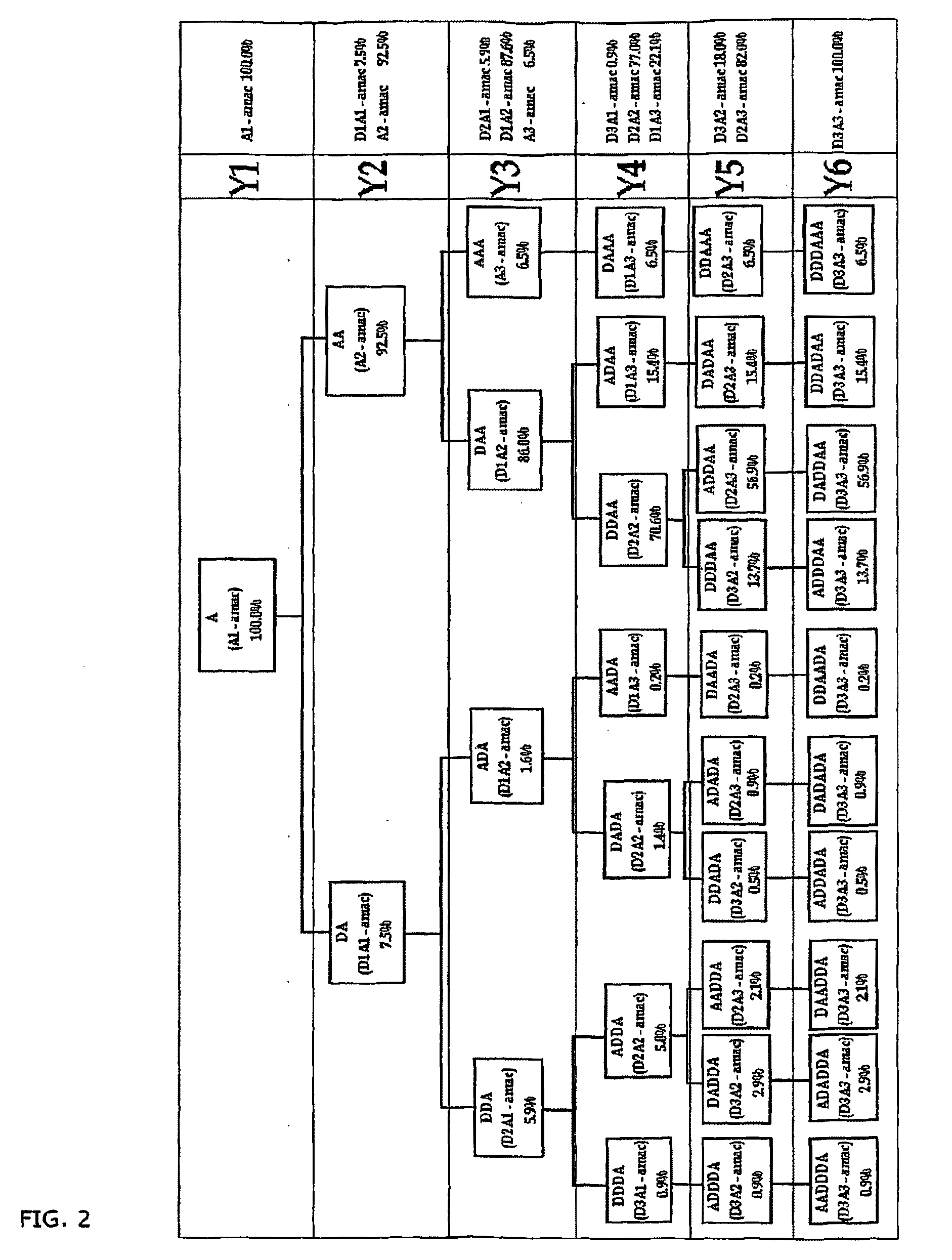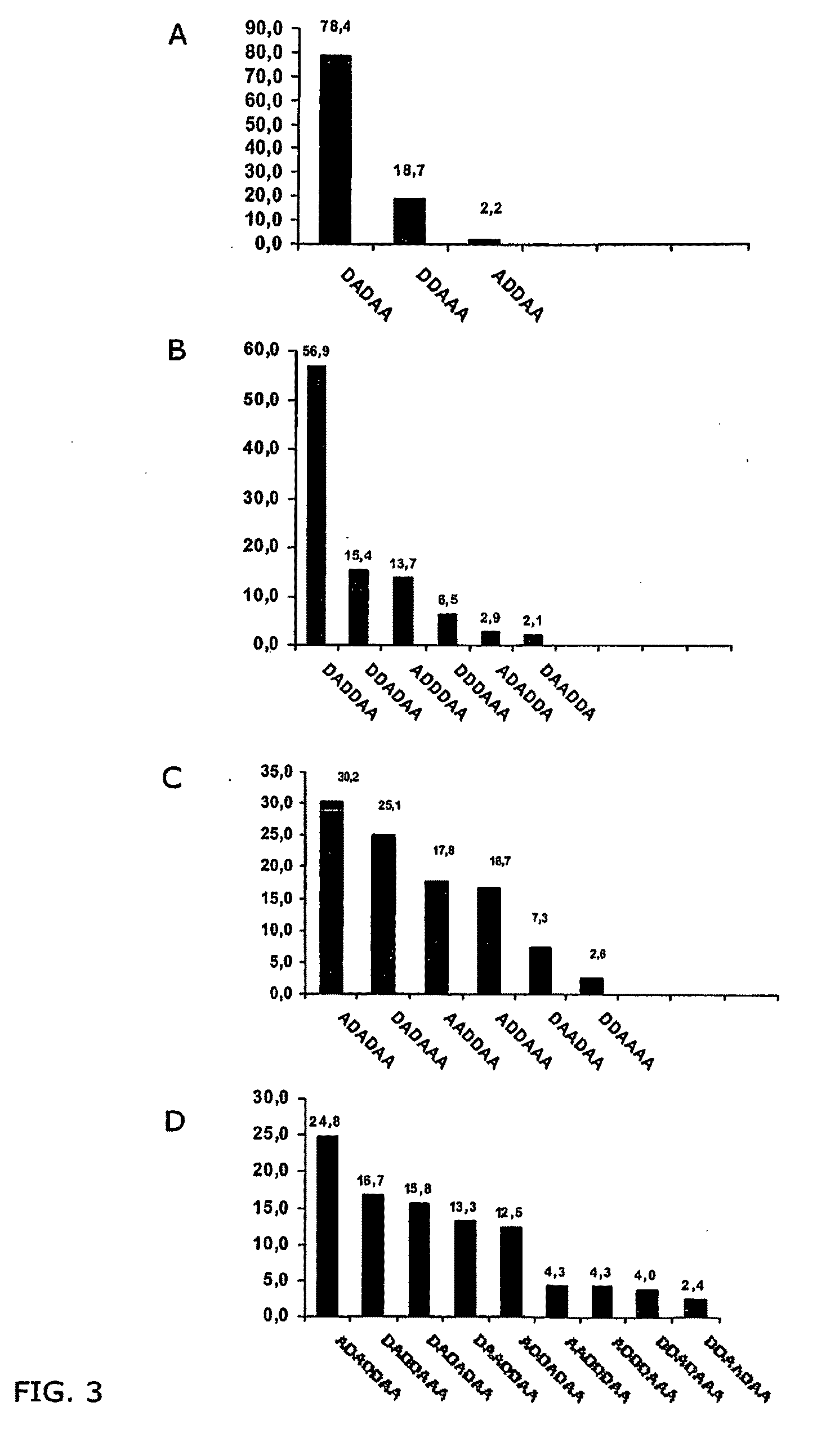Compositions of partially deacetylated chitin derivatives
a technology derivatives, which is applied in the field of compositions of partially deacetylated chitin derivatives, can solve the problems of limiting the application range of chitosan preparations with more than 60-70% dd, affecting and reducing the ph of partially deacetylated chitin, so as to enhance the biodegradability of composites
- Summary
- Abstract
- Description
- Claims
- Application Information
AI Technical Summary
Benefits of technology
Problems solved by technology
Method used
Image
Examples
example 1
Production of Highly Pure Partially Deacetylated Chitin Polymer (Chitobiomer)
1.1 The Use of Homogeneous Deacetylation Condition in Order to Increase the Yield of Chitobiomer Compositions and Substantially Reduce the Level of Bacterial Endotoxins During Deacetylation
[0062]Chitin powder (1) was added (2) to 50% NaOH (3) at 15° C. (ratio of chitin / NaOH, 1:15, w / w) and mix at constant speed of 36 rpm (4) for 1 h (5). Subsequently, fine crushed 3-10 mm ice (ratio alkali / ice, 1:3, w / w) (6) was added to the alkali slurry to dissolve the chitin. After 2 h when the chitin was dissolved and bacterial endotoxins fully exposed to the alkaline solution, temperature (7) was increased and deacetylation reaction carried out at 16° C. for 40 h. After deacetylation process is completed, and endotoxins are dramatically reduced (<30 EU / g), pH was further adjusted to 3.8 (8). This was followed by series of filtration steps (9) to remove foreign particles and undissolved polymers. The polymer was recover...
example 2
Production and Characterization of T-ChOS
2.1 Production of Lot G020418; A Heterogeneous ChOS Test Lot; Quantification and Sequencing of Homologues
Production
[0084]Sodium hydroxide, 25 kg was dissolved in 25 kg of water in an 80 L blender and heated to 60° C. Shrimp chitin from P. borealis (Genis ehf.), 2.5 kg was added and stirred (15 rpm) for 40 min. The slurry was then cooled with water and washed in a cheesecloth bag (200×40 cm) for 10-15 minutes. The chitin gel was transferred into a 200 L blender, the pH was adjusted to 4.0 by addition of 30% HCl, and water was added to give a volume of 100 L. A Family 18 endo-chitinase was added (10,000 units / kg substrate) the gel was stirred for 22 hrs at 30° C. The enzyme was denatured by adjusting the pH to 5.4 and heating of the solution to 80° C. for 10 min. After cooling, the oligomer solution (ChOS) was poured through a sieve of 280 μm mesh size. The solution was desalted using DSS LabStak M20 nanofiltration unit with 0.72 cm2 of 500 Da ...
example 3
Absorption of Therapeutic Chitooligosaccharides in the Human Body
Methods
Chitooligomers
[0112]Chitooligomers composed of N-acetyl glucosamine and glucosamine were prepared by Genis, Reykjavik, Iceland. Briefly, chitin was partially deacetylated in alkali, washed and hydrolysed to oligomers by chitinase. Oligomers were ultrafiltrated, desalted and spray dried to a fine white powder. Average degree of deacetylation was 47% (FA 0.53). Analysis and quantification of oligomers and homologues were performed, using the same methods as for the blood. This data was used to compare the absorption of different homologues into the blood.
General Blood Sample Treatment
[0113]A voluntary subject was consuming daily 1.8 g of ChOS (Genis ehf; S41124-1K) for a period of 4 weeks. Blood samples were collected within a period of 6 weeks. The first sample was taken before consumption of ChOS. The following 4 samples were taken weekly starting 1 week after the first consumption. Sample 6 was taken 2 weeks af...
PUM
| Property | Measurement | Unit |
|---|---|---|
| Temperature | aaaaa | aaaaa |
| Temperature | aaaaa | aaaaa |
| Fraction | aaaaa | aaaaa |
Abstract
Description
Claims
Application Information
 Login to View More
Login to View More - R&D
- Intellectual Property
- Life Sciences
- Materials
- Tech Scout
- Unparalleled Data Quality
- Higher Quality Content
- 60% Fewer Hallucinations
Browse by: Latest US Patents, China's latest patents, Technical Efficacy Thesaurus, Application Domain, Technology Topic, Popular Technical Reports.
© 2025 PatSnap. All rights reserved.Legal|Privacy policy|Modern Slavery Act Transparency Statement|Sitemap|About US| Contact US: help@patsnap.com



